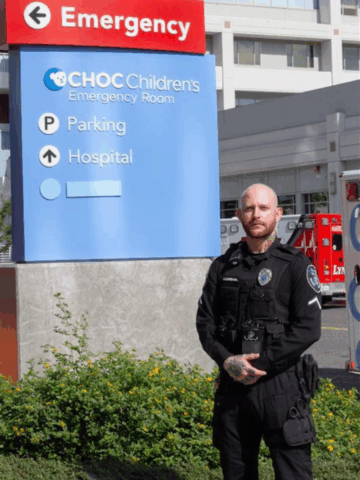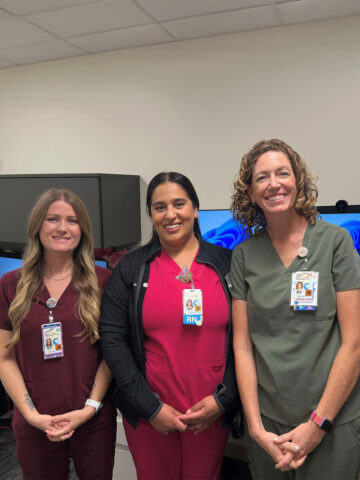CHOC has received national recognition for treating newborns with jaundice after participating in an 18-month effort by the American Academy of Pediatrics (AAP) to improve quality of care for babies born with elevated levels of bilirubin.
One of the ways doctors treat newborns who have this common condition is by putting them under special blue-spectrum lights, a process called phototherapy that decreases excess bilirubin, a yellow pigment of red blood cells.
Jaundice occurs because a baby’s liver isn’t mature enough to efficiently process bilirubin. Elevated levels of it can travel to the brain and cause seizures and brain damage.
CHOC was among more than 90 pediatric healthcare systems to participate in the Value in Inpatient Pediatrics (VIP) Quality Network LIGHT (Learning & Implementing Guidelines for Hyperbilirubinemia Treatment) quality improvement project through the AAP beginning in fall 2022, when the latest guidelines for treating neonatal jaundice were published.
CHOC was recognized as one of 19 institutions that was most improved in reducing subthreshold phototherapy.
“We are honored to receive this recognition,” said Dr. Kris Chang, a hospitalist who co-led CHOC’s LIGHT quality improvement team with fellow hospitalist Dr. Amanda Schafenacker.
Other CHOC associates who participated in the effort were Dr. Theodore Heyming, medical director of emergency medicine; hospitalists Dr. Jennifer Lusk, Dr. Britanny Winckler, Dr. Dayna Chin and Dr. Jeff Armstrong; and UCI/CHOC pediatric residents Audrey Park, Haley Palaganas,, Madison Huffman and Kamal Chikalard).
About 60% of full-term newborns get jaundice and 80% of premature babies are born with the condition.
The LIGHT project had four primary goals: decreasing the amount of subthreshold therapy given; obtaining direct antiglobulin testing for all infants with blood type O mothers; decreasing early rebound bilirubin checks in low-risk infants; and decreasing unnecessary IV fluid use during phototherapy.
Overall, the goal of LIGHT was to utilize updated clinical practice guidelines from the AAP regarding neonatal jaundice and to participate in the AAP quality improvement project.
Those involved aimed to “safely do less” by decreasing the number of infants being admitted to the hospital for jaundice and decreasing the number of infants receiving phototherapy when they are not yet at threshold level.
“Overall, we worked on implementing education and measures to achieve guideline goals,” Dr. Schafenacker said.
The project began on Sept. 19, 2022, and continued until March 31, 2024.




